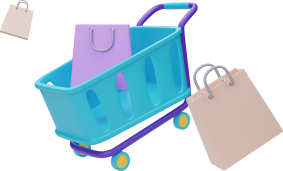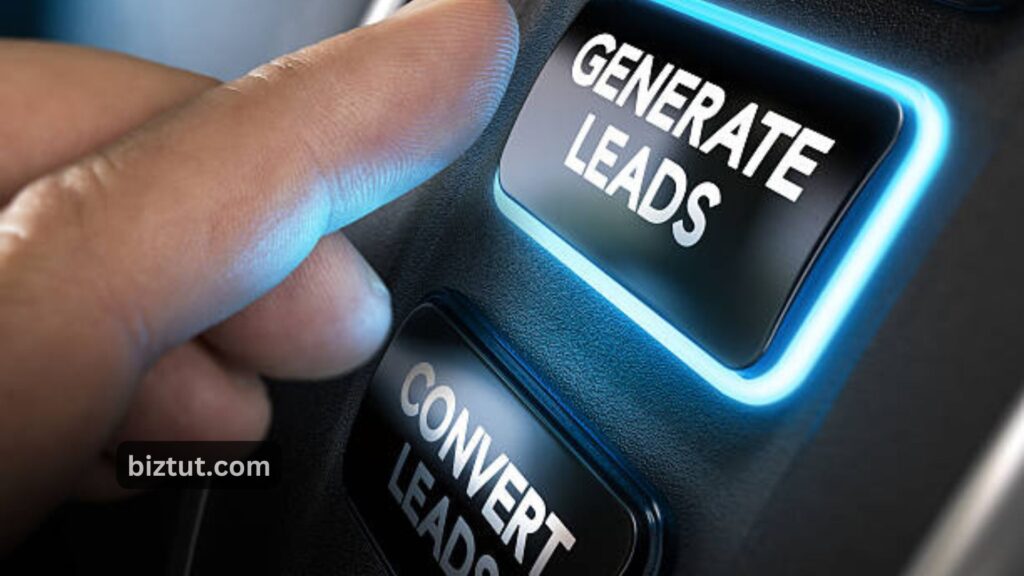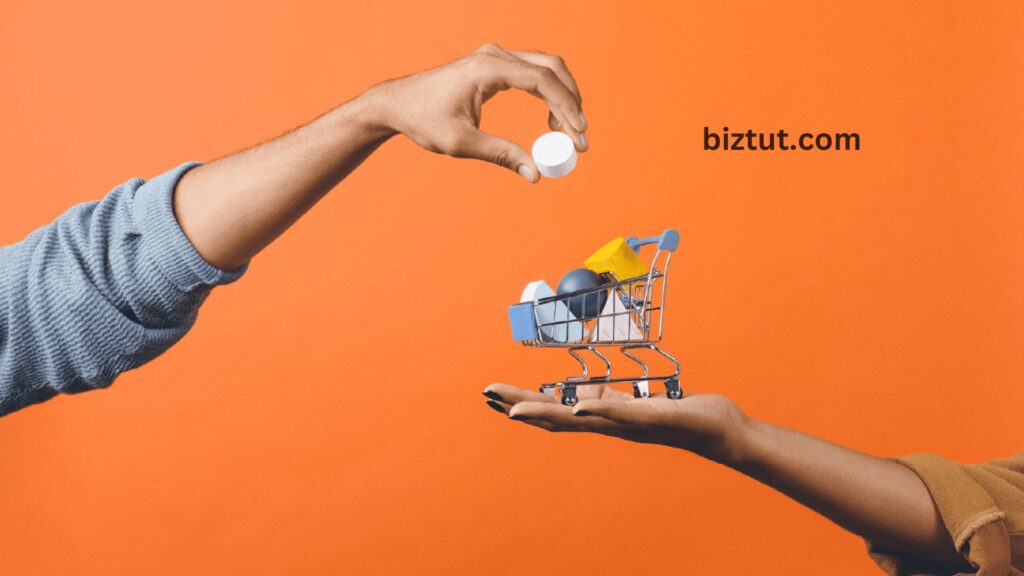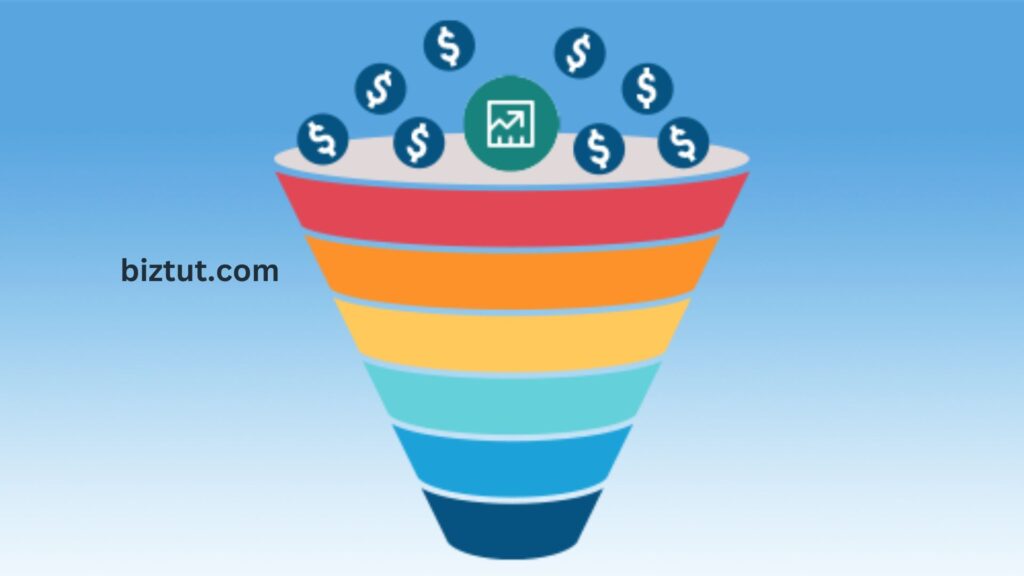“Buy me those chocolates!”
The kid pointed his chubby finger at a big jar of sweets on the shop counter while they waited to check out.
The guy at the counter grinned, but the mother winced.
She just got cross-sold.
Amazon has found that cross-selling and upselling make up about 35% of its revenue. In fact, product recommendations bring in an average of 10-30% of sales for eCommerce sites. So, why shouldn’t upselling and cross-selling work for you? You can figure out what works best for your business with our handy A/B testing tool!
What are upselling and cross-selling?
Upselling and cross-selling are like cousins in the sales world.
Here’s a fun way to see how they differ:
If you buy a cow from me and I offer you a better one for 50 bucks more, that’s an upsell. But if I throw in a hay bale for just 5 bucks with your cow, that’s a cross-sell.

Upselling is when you try to sell a fancier, more expensive version of something a customer is already buying or owns. This could be a better model of a product or the same product with extra features that make it feel more valuable. For example, upselling is why we ended up with a 54” TV instead of the 48” one we originally planned. It’s also why you might have subscriptions to services you never use!
On the other hand, cross-selling means selling related products that complement what the customer is already buying. These items often come from different categories but work well together, like pairing socks with shoes or offering an email marketing tool alongside CRM software for businesses.
Cross-selling is a smart strategy. For instance, McDonald’s places their apple pie dispensers right behind the cash register, where customers can easily see them. Jeff Stratton, who leads McDonald’s U.S. division, mentioned that if they moved the dispensers to the back, apple pie sales would probably drop by half.
There’s also a popular technique called bundling. This combines the main product with other related products at a higher price than if they were sold separately. Think of it as a mix of upselling and cross-selling!
What is bundling in eCommerce?
By bundling the camera with two essential products, Nikon creates a great offer that customers can’t resist. Bundling is often paired with a discount to make the deal even more appealing.
There are two main types of bundling: pure bundling and mixed bundling. In pure bundling, products are only sold together and can’t be purchased separately. In mixed bundling, customers have the option to buy items individually or as a bundle.
Vineet Kumar from Harvard Business School and Timothy Derdenger from Carnegie Mellon University studied how Nintendo used bundling in the video game market. They found that Nintendo’s revenues dropped nearly 20% when they switched from mixed bundling to pure bundling. This is because, in the gaming market, prices tend to fall quickly, so customers often wait to buy just one item until it becomes available at a lower price.
So, should you go for upselling, cross-selling, pure bundling, or mixed bundling? The best way to find out is to A/B test and see what works for you! One effective strategy is to set a minimum order amount for free shipping. Just make sure to choose a minimum that encourages customers to buy the bundle without making it too high.
Amazon does all of this really well!
Benefits of cross-selling and upselling
Many people mistakenly think that cross-selling and upselling are just sneaky ways to get more money from customers. But really, when done right, these strategies can help customers make better choices that meet their needs. It’s all about giving them the best options and making sure they’re fully informed.

For example, if Bob buys a new wall clock, you could remind him to pick up some batteries. Or if Jack is considering an i5 processor, you might show him the more powerful i7 as well.
So, how do cross-selling and upselling benefit you as a marketer?
- Increases Customer Retention: Most customers buy products to solve a problem. They know there’s an issue but might not realize the best solution. As Steve Jobs said, “People don’t know what they want until you show it to them.” When you upsell or cross-sell effectively, you help customers discover extra value, which can boost your revenue by up to 43% and encourage repeat purchases.
- Increases Average Order Value and Lifetime Value: Cross-selling and upselling help raise both your overall and average order value. This means more revenue and profit without much extra cost. You’ve already invested in marketing to bring customers to your eCommerce store, so maximizing their order value is essential for getting a good return on investment. A study by Marketing Metrics found that the chance of selling to an existing customer is 60-70%, while the chance of selling to a new customer is only 5-20%. This makes upselling to existing customers a smart way to increase lifetime value.
- Lowers Customer Acquisition Costs: Upselling and cross-selling let you get more from a single marketing campaign. Instead of running separate campaigns for different products or upgrades, you can bundle items together or push for upgrades with leads that are already interested. This not only saves money but also makes your marketing efforts more efficient.
If you want to learn more about how to motivate your visitors to make purchasing decisions, check out our insightful talk with Mogens Møller on the VWO Podcast!
Disadvantages of cross-selling and upselling
Cross-selling and upselling are popular strategies many companies use. But if they’re not done right, they can leave customers feeling unhappy.
Here are two big problems that can happen when these strategies aren’t implemented carefully:
- Decision Overload: When customers are faced with too many product options, they can feel overwhelmed. If they see an endless list of combinations and choices, it can make deciding what to buy really tough. This frustration might even lead them to abandon their purchase or stick with just what they originally planned to buy, ignoring any extra offers. To avoid this, it’s important to simplify the cross-selling process by presenting targeted and relevant options that make it easier for customers to choose.
- Sales-Focused User Experience: If upselling and cross-selling feel too pushy or aggressive, customers can quickly get annoyed. Constantly bombarding them with offers or unrelated products can create a negative impression and ruin their overall experience. Customers want a smooth and personalized shopping journey. If they feel overwhelmed by constant sales pitches, it can take away from their enjoyment and erode their trust in the brand.
By focusing on making the experience better for customers, you can avoid these pitfalls and improve satisfaction!
Should you upsell or cross-sell in eCommerce?
There isn’t a simple answer to whether upselling or cross-selling is the better strategy. The best way to figure it out is through A/B testing.
Let’s look at a made-up example involving an eCommerce store that sells electronic gadgets and accessories. The marketing team noticed that customers aged 25-34 were really interested in their website but weren’t spending much money per order.

The marketing team came up with two ideas for cross-selling and upselling to boost their average order value and decided to run an A/B test using VWO.
For the cross-sell option, they added a personalized “You May Also Like” section right below the main product. This section included complementary accessories, like wireless headphones and protective cases, to encourage more purchases.
For the upsell option, they created an “Upgrade Your Experience” section on the product page. Here, they showcased premium versions or higher-end models of the product, highlighting features that made them more durable or better performing.
The team ran the A/B test for 14 days, keeping an eye on the average order value and total revenue. In the end, the upsell option won out, with an average order value of $110 and revenue of $28,000, compared to the cross-sell option, which had an average order value of $90 and revenue of $25,000. This showed that customers who saw the upsell section were more likely to buy higher-priced items.
Because of the results, the marketing team decided to focus on the upsell approach since it brought in more revenue and a higher average order value.
This is why A/B testing is so valuable—it helps you choose between cross-selling and upselling based on which option leads to better conversion rates, profit margins, and customer feedback. Paul Rouke, the head of usability at PRWD, explains that cross-selling works best on checkout pages.
How to improve cross-selling and upselling?
One of the easiest ways to upsell is by suggesting the next higher model of a product. But when you’re only aiming for a small percentage of buyers—just 4%—you have to be really careful. The margin for error is razor-thin!
Here are some tips to improve your upselling game:
- Promote your best-reviewed or best-selling products. These are usually the ones that grab attention.
- Give your upsell options more space on the page. Display testimonials to show how great these products are.
- Use customer personas to make suggestions that feel relevant and tailored.
- Provide context for your suggestions: explain why someone should choose the upsell instead of the original product.
- Stick to the same category. For example, don’t suggest a 17-inch laptop when someone is looking for a MacBook Air. They don’t meet the same needs.
You can also use cross-sell techniques on the checkout page to encourage impulse buys:
- Make sure cross-sell products are at least 60% cheaper than what’s in the cart. This makes it more tempting for customers to add them.
- Offer products that are easy to overlook, like lens filters, mobile earphones, or even lighter for a gas stove. The options are endless!
- Be careful not to overwhelm customers with too many choices, or they might just abandon their cart altogether.
If you’re manually suggesting upsells and cross-sells, consider automating the process. Group products by category and tag related items to streamline suggestions. This way, you can make the experience smoother for your customers!
How to effectively cross-sell and upsell?
A study by Bain found that simplifying choices can boost revenues by 5-40% and cut costs by 10-35%. Here are some ways to make upselling more effective:
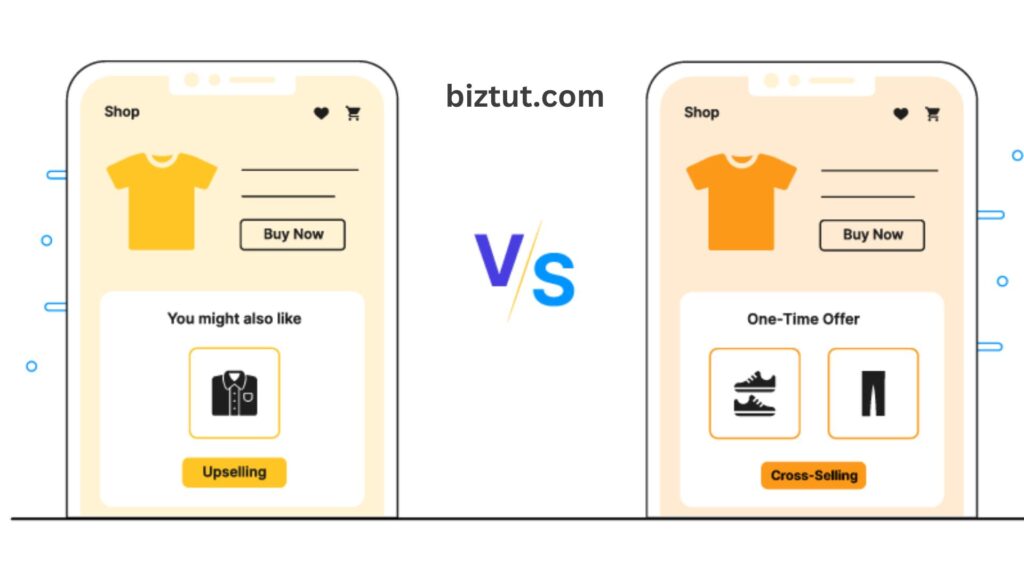
1. Upsell Smart by Narrowing Choices
Too many options can be overwhelming. Professor Iyengar and her team did a study in a California gourmet market, setting up booths for Wilkin and Sons Jams. One booth had 24 different jams, while the other had just 6. Surprisingly, 60% of people visited the larger booth, but only 3% ended up buying something. In contrast, 30% of visitors who sampled from the smaller booth made a purchase. This shows that fewer choices can lead to more sales!
2. Offer Bundles to Reduce Decision Complexity
Every decision a customer has to make can add complexity. To make buying easier, think about reducing the number of choices. Bundling related products allows customers to buy several items at once, which simplifies their decision-making process. This way, they spend less energy deciding what to get.
3. Use Price Anchoring: The Surprising Power of Dummy Choices
A few years ago, The Economist ran an ad that offered three subscription options: a web-only subscription for $59, a print-only subscription for $125, or both for $125. The print-only option was a “dummy choice,” making the other options look better. When Dan Ariely tested this with MIT students, most chose the combined subscription. But when he removed the print-only option, 68% picked the cheaper web-only subscription instead. This shows that a less appealing option can make a better one seem even better.
Actionable Tip: If a customer is looking at a top-tier entry-level DSLR, show them a mid-level DSLR without extras for a bit more, along with the same mid-level DSLR with add-ons at the same price. Clearly explain how the mid-level option benefits them, and you’ll likely increase your upsell chances.
4. Be Helpful and Offer Value, Not Pushy or Aggressive
The key to successful cross-selling and upselling is to help customers by suggesting relevant products. Use data and customer behavior to recommend items that meet their needs or solve problems.
Here are a few things to avoid:
- Don’t suggest upsells before they choose a product.
- Don’t overwhelm them with too many options.
- Avoid sneaky tactics, like hiding pre-selected add-ons.
5. Don’t Forget Post-Purchase Cross-Selling
Your chance to cross-sell doesn’t end when the customer checks out. The time after their purchase is crucial, and many eCommerce businesses overlook it. Instead of just sending a receipt and the product, use this time to build loyalty and offer special deals.
Utilize emails, confirmation pages, and other post-purchase communications to suggest more products and incentives.
6. Personalize Customer Experience
Tailoring recommendations based on past purchases and behavior creates a more relevant experience for customers. This increases the chances they’ll see value in additional offerings.
For example, a SaaS company could analyze its paid customers’ behavior to create an upsell opportunity, offering an upgraded plan with new features that address their needs. Personalization helps businesses provide solutions that improve customer satisfaction and drive better results.

Also Read: 7 Ways to Cultivate Customer Loyalty
Upselling and cross-selling examples
Here are two real-world examples of upselling and cross-selling that show how these brands made the most of these strategies using the techniques we talked about earlier.
1. Overstock
Overstock, an online retailer for home goods, is a fantastic example of cross-selling. When you visit their product landing page, you’ll notice a “frequently bought together” section.
This section suggests related products that might be useful alongside the main item the customer is looking at. It feels natural and doesn’t disrupt the shopping experience.
Customers can easily select or deselect these related items, allowing them to customize their purchases. This approach increases the chances of adding more items to the cart, boosting sales through effective cross-selling techniques.
2. SEMrush
SEMrush, a SaaS platform for online marketing, offers a great example of upselling. They allow users to create free accounts with limited access to the platform’s features, giving them a chance to explore what it offers. After this limited access, SEMrush strategically places calls-to-action (CTAs) on each feature page, encouraging users to upgrade their plans.
But SEMrush doesn’t stop there. For users who upgrade to a paid plan, they continue using the same upselling technique with CTAs that prompt them to switch to plans with advanced features and personalized recommendations.
This way, users get used to the platform and its benefits before being presented with upgrades that meet their online marketing needs. Plus, they offer significant discounts on yearly plans, making it more appealing for users to switch from monthly to annual subscriptions.



